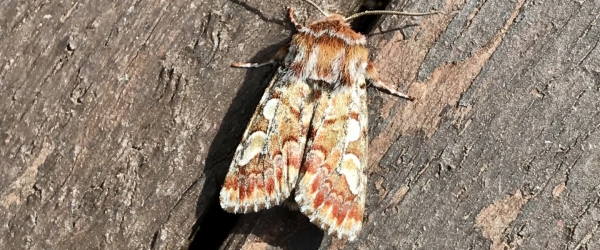Changes in both the distribution and size of the pine beauty moth population are linked to higher temperatures, a new study from the University of Eastern Finland shows. The findings were reported in Scandinavian Journal of Forest Research.
“This is not unexpected, since many scientists have previously predicted that some insect pests will shift their distribution range northward as a result of rising temperatures caused by climate change. However, what is astonishing is that this is happening 50 years ahead of earlier predictions,” Doctoral Researcher Alexander Pulgarin Diaz from the University of Eastern Finland says.
The larvae of the pine beauty moth feed on the needles of different pine species across Central Europe, developing periodical outbreaks often controlled with chemical insecticides. These outbreaks co-occur with other pine insect pests and diseases and could reach thousands of hectares. Outbreaks have not been reported in Finland, but conditions for their development could become favourable as a result of increasing temperatures and forest health decline —both of which are consequences of climate change.
Earlier studies have shown that temperature is closely related to the development and distribution of insects. To study the distribution and size of the pine beauty moth population in Finland, the researchers coupled the number of captured individuals with the previous year’s thermal sums for the same location. For this, they used traps throughout Finland and found that this insect pest had spread into northern Finland, up to 68°51’N. Also, they found that its abundance was higher in warmer places, as in southern Finland.
Read more at: University of Eastern Finland
Pine beauty moth (Photo Credit: Panolis flammea)


